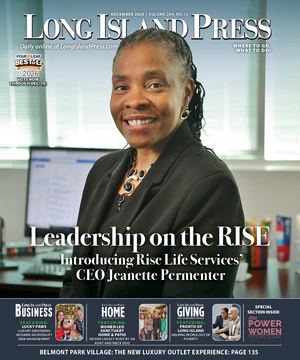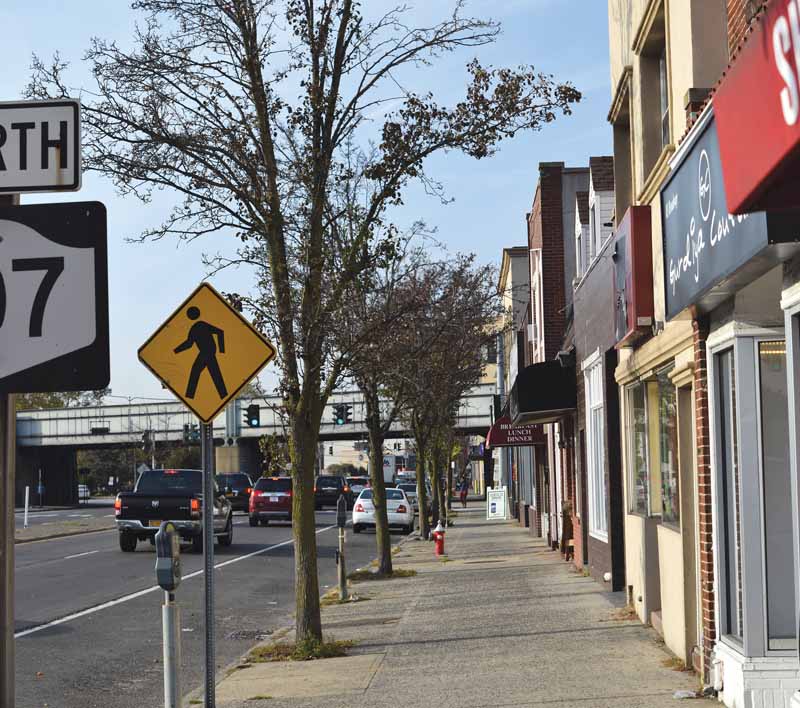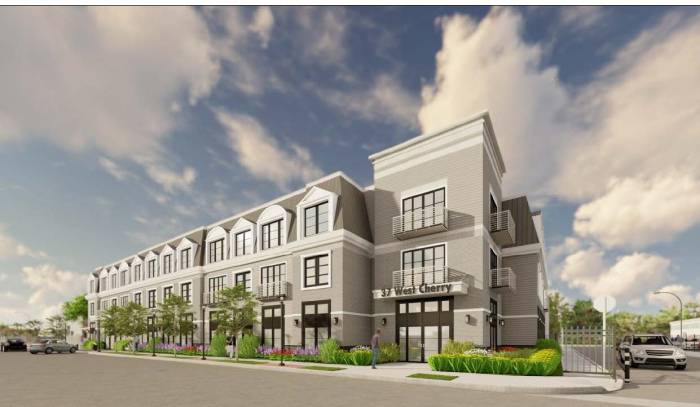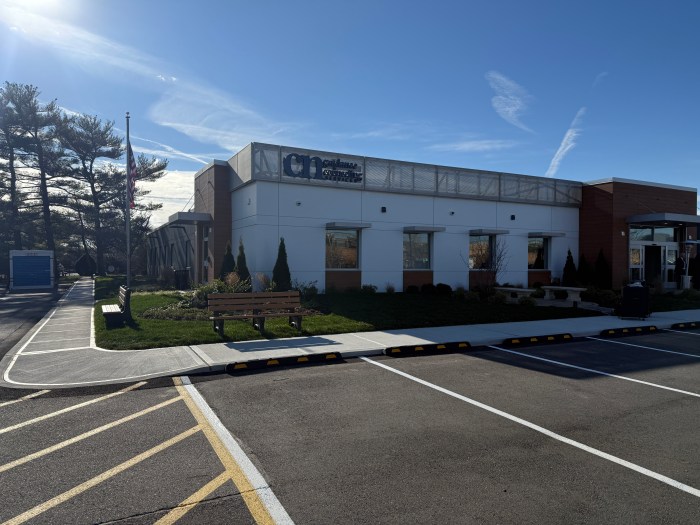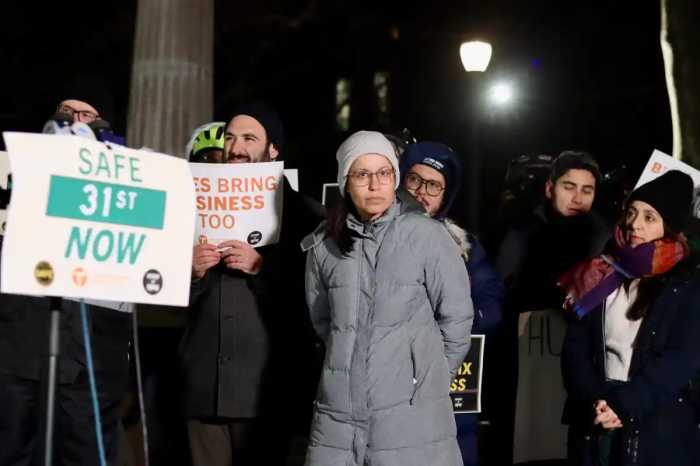 The future of Hicksville’s business and railroad station district is of surpassing interest to residents of the large hamlet; that is why an overflow crowd attended last month’s meeting on downtown revitalization at Hicksville High School.
The future of Hicksville’s business and railroad station district is of surpassing interest to residents of the large hamlet; that is why an overflow crowd attended last month’s meeting on downtown revitalization at Hicksville High School.
The area has been the subject of studies and debates dating back more than a decade. Stakeholders believe the train station and its relatively quick access to the city will continue to be a draw, and what is needed is a way to bring transit-oriented housing and make Hicksville, like Farmingdale and Rockville Centre and other communities, a downtown retail/dining destination.
Town of Oyster Bay Councilwoman Rebecca Alesia, who led the meeting, said of the attendees, “My impression was that the majority were in favor of some changes.”
Alesia said that a follow-up meeting will be held in March 2017 to incorporate the comments and concerns from the November gathering.
The town has been working with the Hicksville Chamber of Commerce, Hicksville Community Council, Vision Long Island of Northport and other community groups.
Alesia believes that the community can make the necessary zoning changes to spur multi-unit housing, and can envision a walkable, vibrant downtown despite what she calls “Hicksville’s unique challenges,” chief of which are two divided highways (Routes 106/Newbridge Road and 107/Broadway) splitting the downtown area.
“But they’re not insurmountable,” she pointed out, and mentioned Rockville Center as a community that found a niche as a dining/night entertainment destination despite the presence of Sunrise Highway and Merrick Road, which bisect its business zones.
As of now, the town does allow apartments above retail spaces in Hicksville, “subject to limitations,” according to Alesia, who added, “although a density level is important, putting a cap is a recognized technique people use in the zoning world.”
Any multi-unit housing would be concentrated in an area near the train station. One proposed zoning map for a downtown residential district marked an area bound on the south by Old Country Road, on the west by Route 106, on the north by Nelson Avenue and on the east by Jerusalem Avenue. According to Alesia, the new housing unit cap being proposed is 500.
Eric Alexander of Vision Long Island, a veteran of many downtown transformation projects, believes the majority of residents are ready for changes. He noted there was no pushback to the concept of new three- or four-story apartment complexes.
“People want to see building stock rehabilitated and some reinvestment,” he said. “Parking remains an issue, traffic remains an issue. All that stuff will get tackled when [the town holds] hearings on zoning [changes].”
Chamber Talks Vision
Alexander was the guest speaker at a recent meeting of the Chamber of Commerce, where President Lionel Chitty painted a dark picture of what would happen if Hicksville failed to make progress.
“We need to turn Hicksville into a destination, not a parking lot,” Chitty stated. “Hicksville is a fantastic opportunity. We need to educate more community members…as to why things need to go forward. If we miss the opportunity, Hicksville will become a bigger parking lot, and the residents are going to lose, taxes will continue to creep up, and there will be no intrinsic value to being in Hicksville.”
The key is moving forward with planning efforts, said Alexander, who detailed how his firm collaborated with the Hicksville Chamber of Commerce, the Community Council and the various civic associations to put forth a plan for the downtown district.
Three transit-oriented housing projects have moved forward, one on Broadway, he related.
“Those were quietly approved by the town, but that was a kind of one-off,” Alexander said. “When you do these types of revitalization efforts, there needs to be zoning code changes to make the revitalization legal. Right now, you have a commercial business district zone that does not allow housing—unless you do a special use permit or variance…If developers want to invest in an area to [remodel] older buildings, and invest that kind of money, they want to know that the town is on board. But the town wants to know that the community is on board.
“And the most important part in our view is the zoning…it does not [provide] an incentive to rebuild,” added Alexander.
Alesia and Councilman Anthony Macagnone represented the town in the planning process, and Alexander said the proposed zoning changes the town put forth closely followed the recommendations.
Alexander told chamber members, “The good news is that there’s a lot of opportunity [in Hicksville]. The bad news is the built environment. There are still a lot of buildings that haven’t been invested in for a while. There are still a lot of quality of life issues. The management of the place is not there. Incorporated villages have people in charge of managing it day to day. We don’t have that in Hicksville.”
That is why, suggested Chitty, Hicksville was considered and then rejected for the $10 million Downtown Revitalization Initiative by the state. The Village of Westbury next door was ultimately chosen by the state for the Long Island region.
Alexander, who lives in Northport, attended Trinity Lutheran Church School and lived on East Marie Street and is familiar with the hamlet.
“If planned properly, there can be an investment in the place that lifts up property values, improves the quality of life, and improves the economic fabric of the community,” Alexander said. “Quite frankly, you have the diversity and social fabric that will work quite well. You just haven’t put the puzzle pieces in place to make it work for you.”
He made note of Farmingdale’s new vibrancy—his firm was involved in the revitalization of the village’s downtown.
“There is all kinds of cool stuff happening there…there is no reason why it could not happen here. In fact, you’re even better positioned,” he said.
“There is no better opportunity on Long Island than Hicksville, but again, we need the community to understand,” said Chitty, who encouraged people to attend the public meetings. “Come out and listen. Stop the nonsense, stop the rumors. Come on out and get educated, so you know what exactly is going on in the community.”
